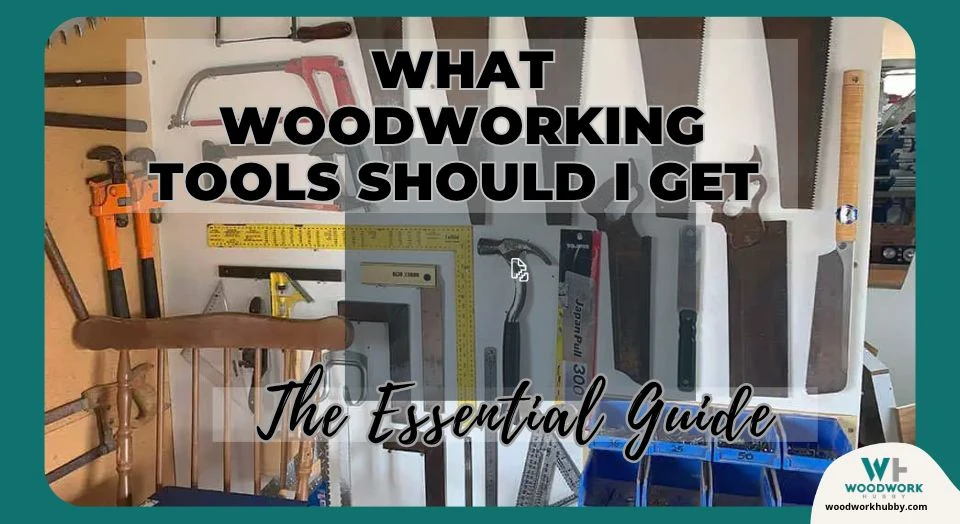Woodworking is both a long-standing hobby and trade in Australia, the United States, and other countries. Statistics on the Woodworking Network, show that there are around 634,000 woodworkers in the United States as of 2018. While woodworking can be a lucrative employment opportunity, it can also be a lifelong hobby that is enjoyed by many. When you begin woodworking, I recommend some specific tools you should purchase.
What woodworking tools to buy first? If you are looking to begin a collection of woodworking tools, it is best, to begin with the basics, such as:
While this list is far from a complete list of necessary tools, it will get you started on your woodworking journey. In this article, you will learn about the tools you need to begin woodworking, as well as extra tools and logistics that can help you as you begin to dive further into woodworking. Probably the best resource I used when starting out, was this guide below called “How To Set Up A Complete Shop On A Budget”.
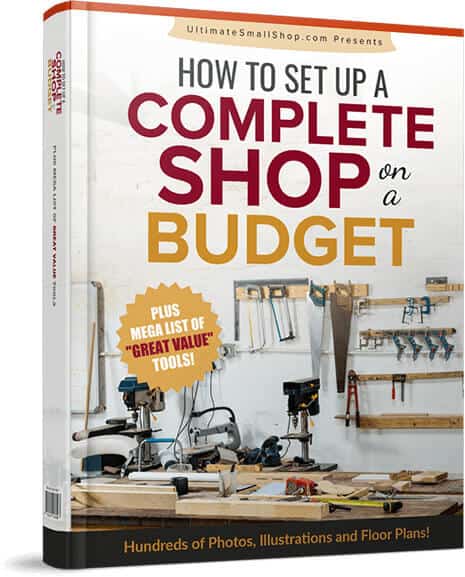
What Woodworking Tools to Buy First

If you are all in when deciding to go into woodworking as a hobby, you may feel like you need to buy every tool in sight. While this may be possible for some, it is likely not possible for everyone, and you may be on a tight budget. If this is the case, you need to know the exact tools that you should have to start your hobby. This list contains the exact tools that I also started out with.
Square
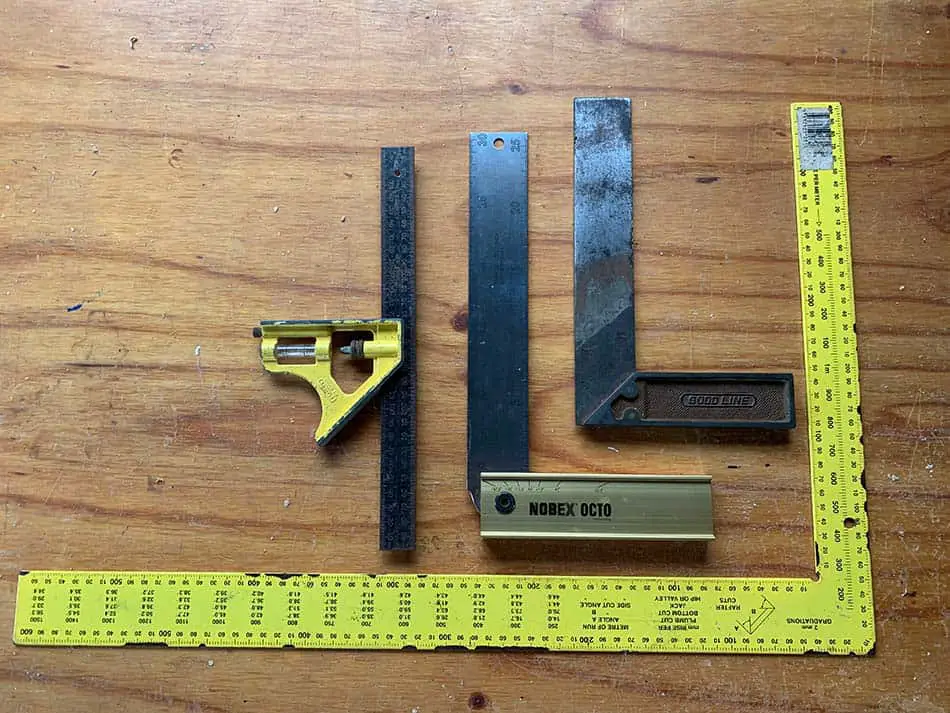
One tool that most builders cannot live without is the standard square. This tool helps you to make sure all your edges are appropriately lined up when building a piece. A square is also vital when marking out woodworking joints. You can purchase a square as an individual tool or a set of squares. The choice you make is entirely up to the needs you may have.
Click Here to see some of the top-rated squares on the market for between $8 – $35 that I have used.
There are many different options when it comes to squares. You can find metal or plastic squares; some squares mount on the wall while others are movable. Depending on your space and the amount of use, you can determine which is best for your needs.
Chisel Set
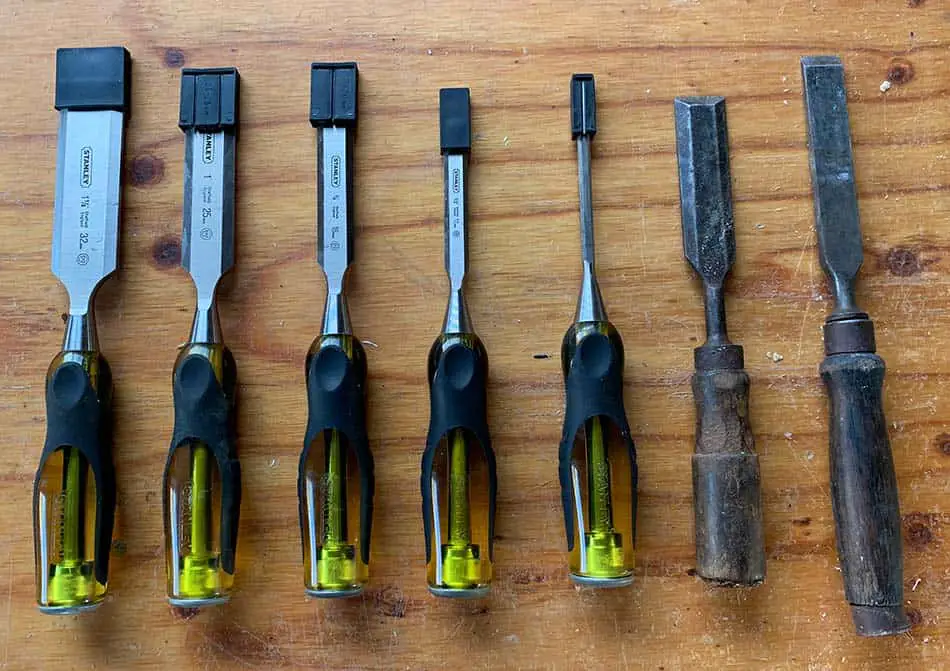
One of the most popular hand tools for woodworking is a chisel. I highly recommend getting a full set as the different sizes will be very handy for almost every job. A quality chisel set will last for an extended period with proper care and use.
These are the chisel sets that I have personally used. You can purchase them for between $25-$160.
A chisel set will be handy to have in any woodworking situation as it allows you to neatly cut woodworking joints and pair away the wood with ease. I find I always have a chisel on my bench as it gets used every day and I would be lost without them.
Mallet
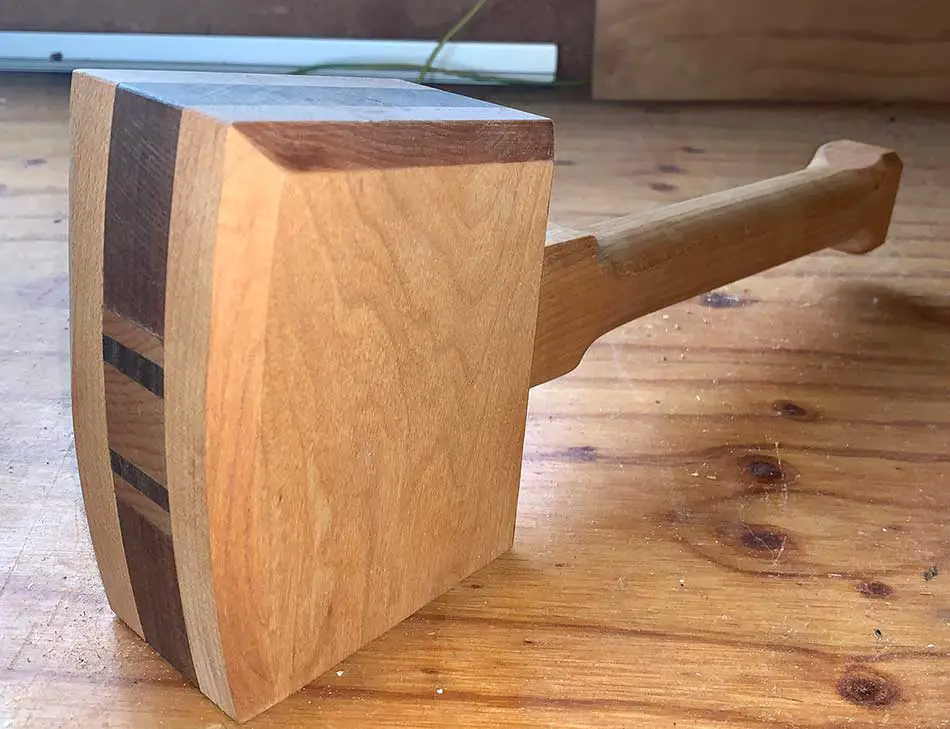
This may seem like a basic tool but the trusty mallet helps immensely when using your chisels and for adjusting wood joints. Every woodworker needs a good mallet.
Mallets come in a few different varieties such as rubber, wooden, plastic, and steel. You should always buy one to suit your needs.
These are the mallets I personally use.
Take a look at my article on mallets here to see why woodworkers always use round mallets.
Tape Measure
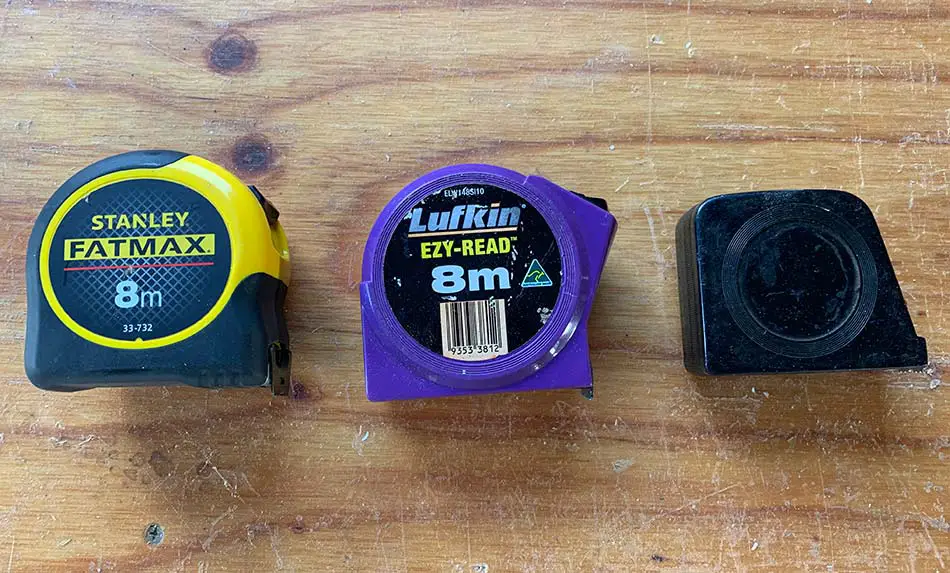
Whenever you are planning to build something, it is crucial to have a proper measuring tape. Again, there are many measuring tapes on the market. A tape measure is quite basic and inexpensive. You can purchase a tape measure for between $10-$45.
I usually have 6 or 7 tape measures lying around and generally, they will be one of these.
Not all tape measures are created equally. You can find a basic tape measure, or you can also find tape measures that include a laser to ensure you measure in a straight line. While this is not necessary, it can be useful. Be sure to check this guide on some weird things you may have not known about tape measures.
Router

A router is a handy tool to have when you want to put grooves or decorative edges on pieces that you have built. Routers come in a variety of sizes with different capabilities. Most are portable, and you can expect to spend between $99 – $330.
Here are some routers I have used and are good value for money.
Most routers are portable and can be stored easily. If you are looking for a more permanent option, you can find stationary router tables for a much higher price. More than 85% of your jobs can be performed with one of these routers.
Router Bits
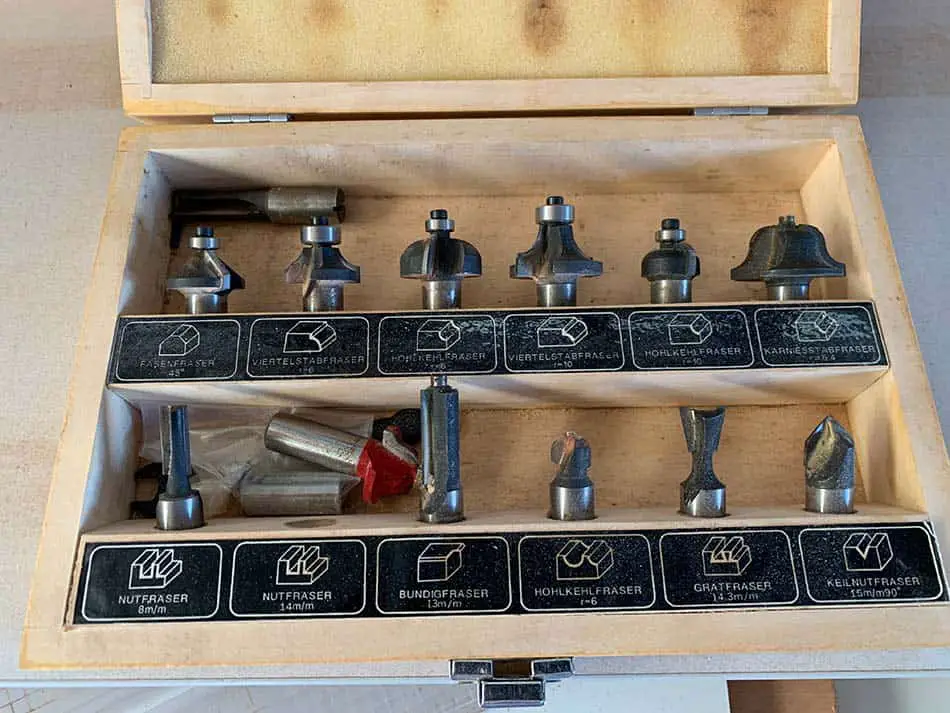
These are the important parts that do all the work. For this reason, I recommend you use ones that are good quality and will last a long time. I started out with this 35 pcs set and it has served me well and still going today.
Compound Miter Saw
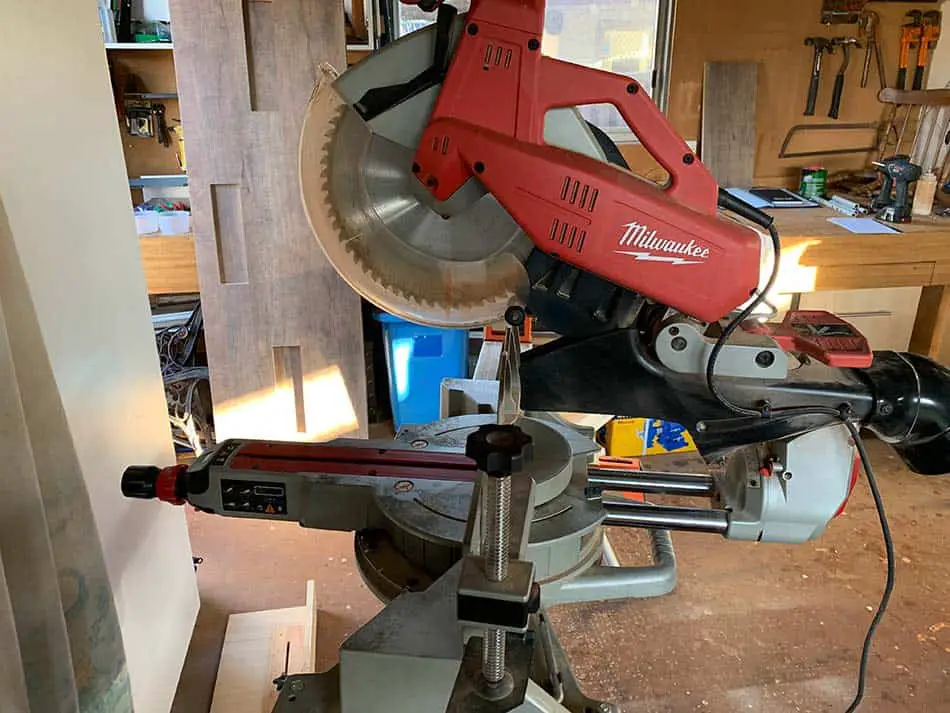
A compound miter saw is a versatile saw that will come in extremely handy in your home workshop. The compound miter saw not only allows you to make straight cuts, but it also allows precision angles to be cut as well.
Here are some top options that cost between $150-$599.
In the article Sliding vs. Compound Miter Saw- What’s the Difference? Jacob Hanson explains that a compound miter saw is handy because it allows you to cut thicker pieces of wood.
Table Saw
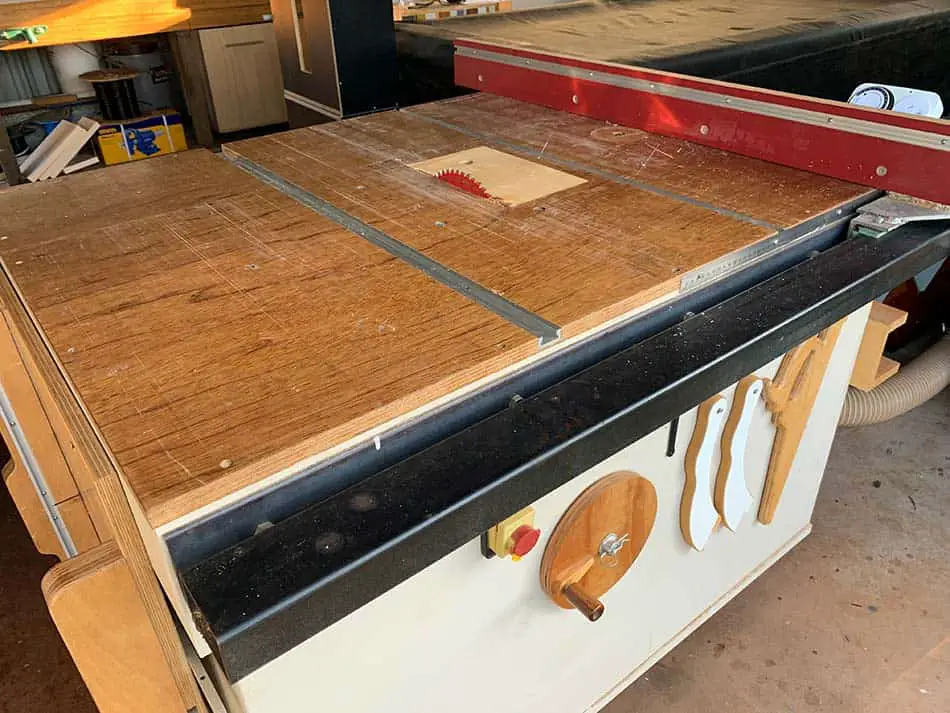
This tool is probably the most versatile and highly used tool in the workshop. The table saw is by no means a necessity if you have budget restraints but certainly will prove very handy indeed should you want to make some clean cuts for making joints etc. I use mine nearly every day.
See how the hip pocket is going after getting the above tools first, but if you have some spare change, I would consider one of these table saws.
When you look at this list, you may be a bit overwhelmed, but rest assured that these essential tools can get you started on the right foot with your woodworking journey. While this list is quite minimal and can fit any budget, do not feel like this is the limit to what you can add to your beginning collection.
There are several other tools that woodworkers use each day; however, they are often acquired over time because of the cost associated with them. If you are just beginning the process of woodworking, you probably won’t be ready to use a lot of other tools until you have learned your craft a bit better, so beginning small is going to be beneficial to you.
Types of Woodworking
When you look up the hobby of woodworking, you will find several subcategories that go under this heading. Some of the subcategories are wood carving, pyrography, woodturning, sign making, and furniture making.
Wood Carving: Woodcarving is the most basic of woodworking. According to Dennis Moor of Chipping Away, this is a foundational part of woodworking. In his article How to Start Woodcarving, he highlights the four types of wood carving:
- Whittling
- Carving-in-the-round
- Relief carving
- Chip carving
Pyrography: This form of woodworking involves the burning of wood. If you have ever been to a craft fair or location where craftsman has been to display their works, chances are you have seen ornate pieces of wood that have been intricately burned. This form of woodworking is an art that requires minimal equipment and space.
Wood Turning: To turn wood, you will need a piece of equipment called a lathe. This is not a necessary piece of equipment for most woodworking so it would not be necessary for basic woodworking. Woodturning is how wooden bowls are made. Because you need to set up a lathe for the carving to occur, you will need a designated work area.
Sign making: As the name suggests, one form of woodworking can involve the making of wooden signs. When choosing this type of woodworking, there will be beginner and advanced levels of sign-making. The materials are quite minimal, as is the space needed to complete this type of work.
Furniture making: For some reason, when the term woodworking comes up, furniture making is one of the first things people think of, whether it be a desk, shelf, or more intricate piece of furniture. If this is where you are starting your woodworking journey, you will likely need all the above necessary tools and then some, not to mention, a designated work area. Like sign making, this form of woodworking also has a beginning and advanced level.
What is the Cost of Woodworking?
As you look at the types of woodworking and equipment that you may need, it can seem a bit overwhelming and out of your price range. However, there are pieces of equipment for every price level. When looking at cost, there are two factors to consider: materials and equipment.
The more advanced your woodworking hobby, the more expensive the equipment and materials will likely be. Ultimately, you determine the amount of money you want to spend on the hobby. The more experienced you get, the more you will likely want to add to your workshop. To find out more about what woodworking actually costs, see this post I created to help you out.
Do You Need a Lot of Space?
Space is something that needs to be considered as you begin this hobby. Remember, if you are focusing more on artistic woodworking, such as pyrography, sign making, and carving, the amount of space you will need is much less significant than if you are focusing on woodturning, advanced sign making, and furniture building.
I have even discussed the option of doing woodwork outdoors under a cover in this article.
As you move to more advanced forms of the craft, you will want to increase both your workspace and tool collection. Many advanced woodworkers have a space that is for building and a space for staining or finishing the product.
How Can You Plan Your Workshop?
If you are at a loss for the actual space you will need, you will need to begin with the same plan that I used here. The best method to plan your workshop is to make a diagram that has a blueprint of the area you are working with. On the diagram, you are going to place the items you will be housing in your workshop. This may be a good time to do a bit of forward-thinking as well.
If you intend to purchase more equipment in the future, it would be wise to make sure it will fit in the designated space. For this reason, I highly recommend reading this guide below.

When planning your space, it is also going to benefit you to keep the following things in mind:
- What power will you need for the equipment you plan to use?
- Will you need an electrician to come in and run new wiring or outlets? Can your current breaker box support the high voltage of certain types of equipment?
- Do you have enough lighting, or will you need more to be installed?
- Is this something you can do alone, or do you need an expert?
- Do you have enough space to hold the projects you are working on? If you are planning to build a bed, do you have enough room to move the wood around and store it as it is being built?
- Do you plan to have a designated finishing room, or do you intend to complete and finish the project in one room?
- Is the location you are planning to use secure? It would be wise to make sure you have a locked door in the shop, especially if you have children that could get in and try to use the equipment.
As you can see, there are many different things you need to think about as you begin to plan your workshop. The most important thing is to remember the plan can be changed, and you can always add or take away things from your workshop as you move forward in your hobby.
How Do You Store Your Tools?
When you purchase tools of any sort, you are making a long-term investment. Because of this, you want to make sure you are storing them in the best possible way. You may have visions of a perfect wall of tools in your workshop or even a glimmering toolbox with perfect lines of tools stored inside. While these are both feasible options, they may not always be possible.
If you are limited on space, you may not have a dedicated storage wall or gleaming toolboxes. Trust me, you don’t need these things to maintain the life of your tools, but you do need to make sure the tools are protected. Following these steps will ensure your tools will retain their quality over time:
- Always clean your tools before you put them away. This may seem like common sense, but sometimes it is tempting just to walk away. Keep a cloth nearby that you can wipe your tools down with.
- Don’t just throw the tools into a box. If you have a toolbox, make sure the tools are layered in the box in a relatively flat manner so they don’t get hit by the lid of the toolbox, which can cause damage.
- Keep the tools in a dry location. The last thing you want is to find rust building up on your tools because they have been in a damp location. This is especially important when looking at electrical tools.
- Try to keep electrical tools off the floor. This will limit the exposure to possible water or gnawing pests.
Where Do You Get Tools?
You may be wondering where the best place is to get tools for your workshop. Luckily, there are many different places you can purchase tools. If you feel like you need to see the tools in person, you can easily take a trip to Lowes, Home Depot, or another large hardware store. You can also choose to purchase all the tools online.
See my ultimate guide to buying used woodworking tools.
There are often easy return policies, so if you are not impressed, you can easily send the tools back for a replacement. Be sure to check the return policy before purchasing online. Another word of caution with online purchasing is to make sure you are getting a new product if that is what you want. Many retailers offer refurbished equipment, which is great, but if you are not expecting a used piece of equipment, it may be problematic.
Final Thoughts
The hobby of woodworking is extremely popular and can be something that you enjoy for many years. When beginning, it can seem a bit daunting and overwhelming to choose the correct pieces of equipment for your needs. It is wise to begin small and add to your collection over time.
While it may be tempting to purchase a lot of extra tools that you “think” you need, it will likely not be economical or useful to you. If you do not have much space to dedicate to woodworking, you will still be able to find equipment that can fit in your area without a problem.
-
What Is Cedar Wood Used For? (Why I Stopped Using It On Some Projects)

Cedar is one of my favorite wood types because I am tasked with perpetually protecting some of my passion projects. It is one of the most resilient woods out there, and I often find myself wishing that all woods were like Cedar because I cannot really use it for all projects. Cedar wood is used…
-
12 Beginner Wood Carving Projects Anyone Can Carve
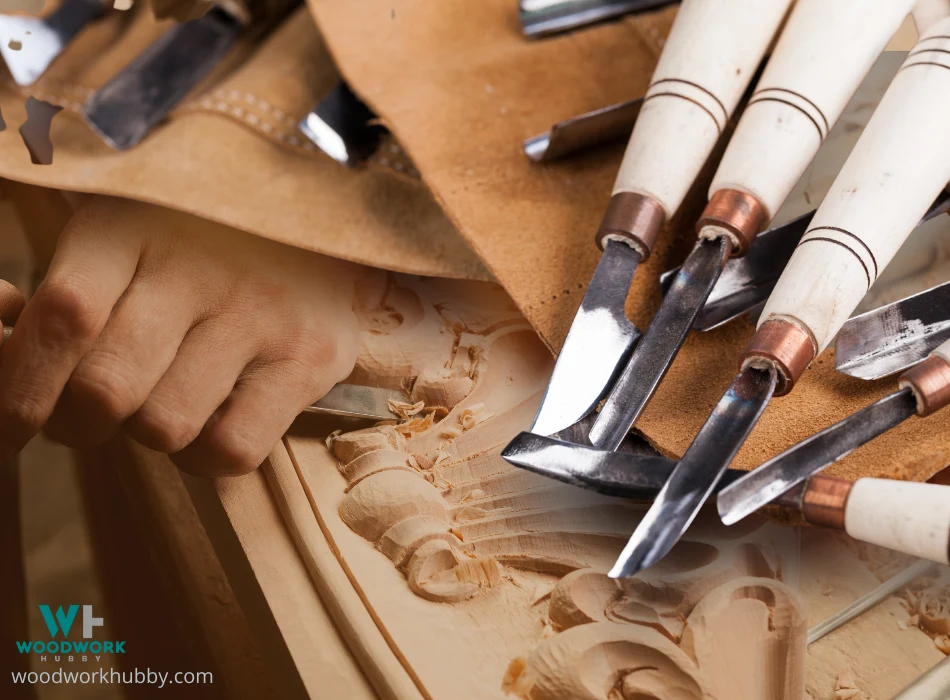
Beginner Wood Carving As a woodworker, I believe woodcarving is one of the simplest forms of woodwork anyone could get involved in. If you start out with the most basic projects first, you can quickly develop the skills and the enjoyment to continue the hobby. I find I get a great sense of achievement from…
-
9 Essential Tips For Screwing Into MDF
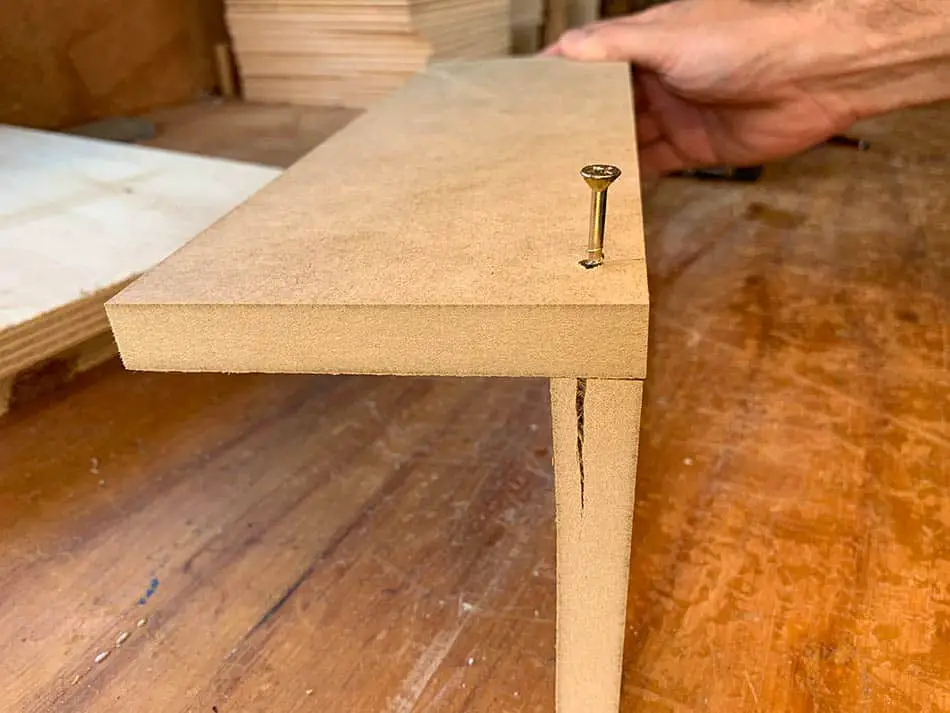
MDF seems to be the one thing that scares most people whenever they need to screw into its edge. I have been a cabinetmaker for the last 20 years and screwing MDF together is something we did every day.All of the apprentices would be always asking how to screw into the edges of MDF without…
-
Maximizing Savings with Bulk Purchase of Wooden Cutting Boards for Your Restaurant

Running a successful restaurant business requires a delicate balance between offering top-notch culinary experiences and managing operational costs. One often overlooked but significant way to save money is by purchasing wooden cutting boards in bulk for your staff. These humble yet essential tools are the unsung heroes of any kitchen, and opting for cost-effective options…
-
Top 5 Best Portable Table Saw For Fine Woodworking

Are you struggling to find the perfect portable table saw for your fine woodworking projects? I know exactly how daunting that can be, having faced the same hurdle once upon a time. After many years of working as a contractor, I have used many table saws and so I decided to identify the best portable…
-
How To Remove Sticky Residue From Wood Table Top (It Works)

I totally get it. That unsightly sticky residue on your beautiful wooden table top just isn’t fun, is it? But how to remove sticky residue from wood table top without causing damage? After much research and plenty of experiments — some successful, others not so much — I’ve compiled quite a variety of methods to…

